Aardonyx Guide:
Aardonyx was an early dinosaur that lived in South Africa about 200 million years ago.
Aardonyx was an early dinosaur that lived in South Africa about 200 million years ago.

The name “pterodactyl” is derived from Greek words meaning “wing finger” and refers to the long fourth finger on each hand, which supported the Pterosaur’s large membrane wings. Pterodactyls were a fascinating species of winged reptiles that lived during the Mesozoic Era, from around 228 million to 66 million years ago. They are believed to be one of the first creatures ever to evolve powered flight. They were among the most successful animals in history, with an estimated 150 genera existing over their long reign on Earth. Pterodactyls ranged greatly in size and shape, from tiny insect-eaters no bigger than a sparrow to massive predators with wingspans up to 11 meters wide!
Pterodactyls are often mistakenly labeled as dinosaurs, but they were actually a species of flying reptiles known as pterosaurs. Pterosaurs were present during the Mesozoic Era from around 228 million to 66 million years ago and evolved powered flight earlier than any other creature on Earth. An estimated 150 different genera of pterosaurs existed over their long reign on our planet, varying greatly in size and shape from tiny insect-eaters no bigger than a sparrow to massive predators with wingspans up to 11 meters wide!
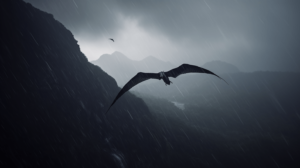
The first Pterosaur discovery is a remarkable story that dates back to 1784. This year, an amateur naturalist named Cosimo Alessandro Collini stumbled upon what he believed to be a large bird’s fossilized wing bone. Little did he know then, but his find would forever change our understanding of prehistoric life and become known as one of the most significant paleontological discoveries ever made!
Collini’s discovery remained largely ignored until 1801 when renowned German scientist Georges Cuvier examined it more closely and identified it as belonging to a previously unknown species of flying reptile—the first Pterosaur ever discovered! He named this Pterodactylus antiquus or “ancient wing finger” in reference to its distinctive fourth finger, which supported its membrane wings. This groundbreaking discovery marked the beginning of modern paleontology and opened up an entirely new world for scientists to explore! Since then, numerous other genera have been unearthed all over the world, giving us greater insight into these amazing creatures that once ruled our skies.
Pterosaurs first appeared around 228 million years ago, during the Late Triassic period, when they were small gliding animals that lived among other early archosaurian reptiles, such as dinosaurs and crocodiles. Over time, pterosaurs developed larger wings, enabling them to fly more efficiently. By the end of the Jurassic period (around 150 million years ago), some species had evolved into large predators capable of soaring across great distances! As these airborne creatures diversified over millions of years, various genera emerged, ranging greatly in size and shape; some were no bigger than sparrows, while others boasted wingspans up to 11 meters wide! The fossil record shows that pterodactyls remained highly successful until their mysterious extinction at the end of the Cretaceous period.
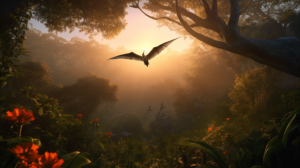
Pterodactylus antiquus is believed to be the first Pterosaur species to be discovered and identified in modern times. It was a small type of Pterosaur that lived in the Late Jurassic period, around 150 million years ago, and were among the first creatures ever to evolve powered flight. Pterodactyls ranged greatly in size and shape; some were no bigger than sparrows, while others boasted wingspans up to 11 meters wide!
Dating back to 1784, this specie was first described by an Italian amateur naturalist, Cosimo Alessandro Collini, when he stumbled upon what he believed to be a large bird’s fossilized wing bone. It was not until 1801 that renowned German scientist Georges Cuvier examined it more closely and identified it as belonging to a previously unknown species of flying reptile—and in 1809, he provided a much more extensive description and gave it the name Ptérodactyle or Pterodactyl. Pterodactyl fossils have mostly been discovered in Germany’s Bavarian Solnhofen limestone, though there may have been discoveries in a few other locations, including Tanzania and England.
The discovery of Pterodactylus antiquus was made in the Solnhofen Limestone, a fossil-rich deposit located near the Bavarian town of Eichstätt in southern Germany. This region is renowned for its exceptionally well-preserved fossils due to the unique geological conditions that existed when it was formed. These conditions included a shallow sea with low oxygen levels, slow sedimentation rates, and abundant food sources resulting in ideal preservation opportunities for ancient creatures. The area has since become famous for yielding some of the most remarkable fossils ever found, including many specimens of extinct species such as pterosaurs and dinosaurs. It also contains one of Earth’s oldest deposits of amber, further enhancing its significance as a paleontological site full of rare discoveries!
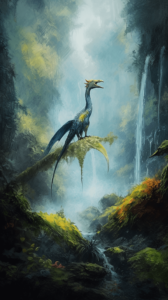
As a result, this location has yielded numerous spectacular finds over time, most notably Pterodactylus antiquus—the first ever identified as belonging to this group of flying reptiles.
Pterodactyls were remarkable creatures that lived during the Mesozoic Era and are known for being among the first to evolve powered flight. They ranged greatly in size and shape, from species no bigger than sparrows to those with wingspans up to 11 meters wide! This would have made them the size of modern-day eagles or vultures. Pterodactylus had a relatively small, compact body. They were bipedal, meaning that they walked on two legs. They had short, muscular arms with sharp claws, which they used to capture prey.
One of the most distinctive features of Pterodactylus was their elongated, reduced-toothed beak. The beak was thin, pointed, curved slightly downwards, and had sharp, needle-like teeth, making it ideal for catching fish and other small animals. With regard to their skeleton, they had hollow bones, like modern birds. This would have allowed them to be lightweight, making it easier to fly. Additionally, some species possessed crests on their skulls which may have been used for sexual display or aiding aerodynamics during flight. Lastly, Pterodactylus had four wings – two main and two smaller wings on their hind legs. The wings were supported by an elongated fourth finger, much larger than the other fingers in their hands.
Overall, the physical characteristics of Pterodactylus were perfectly suited for their aerial lifestyle. Their wings, beak, and teeth allowed them to fly long distances, capture prey, and survive in their prehistoric environment.
One of the most distinctive characteristics of pterodactyls was their one-of-a-kind winged finger, notably the fourth finger. The wing membrane that allowed Pterodactyls to fly was supported by this finger, which was long and very thin. Pterodactyls’ fourth finger was considerably longer than their other fingers and included a number of joints that made it both flexible and powerful. Because of this, they could control and precisely maneuver their wings while flying. The winged finger of a pterodactyl was composed of a number of bones and joined to the rest of the arm by an intricate structure of muscles and tendons. They were able to fly with tremendous control as a result of being able to move their wings in many different ways.
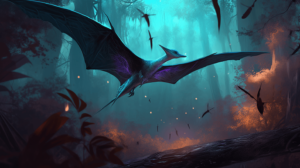
Overall, the unique winged finger of Pterodactyls played an essential role in their ability to fly and survive in their prehistoric environment. Its elongated structure and the unique joint system allowed for exceptional maneuverability in the air and contributed significantly to their flight’s efficiency.
Pterodactyls were highly adapted for flight, and their unique wing structure allowed them to soar through the skies with great speed and agility. They were able to achieve a variety of flight styles, including gliding, soaring, and flapping flight. One of the key features that allowed Pterodactyls to fly was their lightweight, hollow bones. These bones made the creatures much lighter than other animals of a similar size, making it easier for them to take off and stay aloft.
Pterodactyls were also equipped with a powerful set of wings that allowed them to generate lift and stay in the air for extended periods. Their wings were supported by an elongated fourth finger, much larger than their other fingers. This finger helped to support the wing membrane and allowed for exceptional maneuverability in the air.
Pterodactyls were also capable of powered flight, meaning they could flap their wings to gain altitude and move through the air quickly and precisely. Their unique wing stroke pattern allowed them to take off quickly and generate lift even when flying at low speeds. On the ground, Pterodactyls were bipedal, meaning that they walked on two legs. They had short, muscular arms with sharp claws, which they used to capture prey. Their hind legs were relatively small, but they could still move around on the ground easily.
Overall, the flight and locomotion of Pterodactyls were highly specialized, allowing them to move effortlessly through the air and capture prey with remarkable efficiency. This is one of the reasons why they were so successful and thrived for millions of years before going extinct along with the dinosaurs.
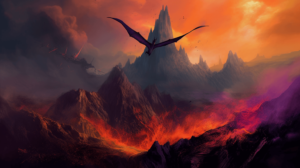
Pterodactyl fossils have always fascinated paleontologists and the general public alike. These flying reptiles, popularly called pterosaurs, ruled the skies during the late Jurassic and Cretaceous periods. Their fossils have been found all over the world, from Antarctica to Europe and North America. The pterodactyls had a distinctive anatomy: large, elongated wings and some with long, reduced tooth or toothless beaks. The diversity in their size and shapes made them one of the most varied and unique species ever to inhabit our planet.
Fossils of these incredible animals have given us a glimpse into their world, allowing us to study how they lived and what kind of environment they inhabited. We can learn more about their size, diet, behavior, and even potential predators or prey by examining these fossilized bones, teeth, and eggs. We also gain insight into ancient ecosystems by analyzing the sediment surrounding fossils. This can tell us information such as climate conditions at the time or nearby plants and animals in the area. Furthermore, it is possible to determine if particular species were migratory based on where their fossils are found. All these facts help build a clearer picture of what life was like when pterodactyls roamed our skies millions of years ago!
In some fossils, remnants of the soft tissues can still be seen in detail, which allows us to learn more about how they looked and moved when alive. Preserved skin and muscle membrane is usually found on the wings where stretchy connective tissue supports the flight feathers or filaments known as pycnofibers. This structure gave them increased maneuverability compared to flying animals with only two fingers on each wing. Furthermore, these membranes have revealed intricate details such as blood vessels, muscles, and even evidence of coloration patterns which may have been used for camouflage or sexual displays. The presence of this soft tissue has provided invaluable insight into pterodactyl anatomy and behavior that would otherwise remain unknown due to fossilization processes destroying fragile structures like these over time.
Pteranodon was a closely related pterosaur to the pterodactyls that lived during the same Mesozoic Era. Unlike pterodactyls, Pteranodon had no teeth and instead had a beak-like structure used for snatching fish from the air or water. They also had wingspans up to 5 meters wide, making them much smaller than their cousins.
Unlike other species of flying reptiles, Pteranodon had no claws at the end of its feet and, therefore, could not climb trees or rocky terrain as easily as others. Instead, they relied on their large wingspan to propel them through the air faster to catch prey more effectively than their counterparts. Additionally, some fossils indicate that Pteranodon may have been migratory as they are often found in different geographical locations around the world, indicating they traveled vast distances looking for food sources or better habitats throughout their lifetime.
Pterodactyls and Pteranodon were two closely related pterosaurs that lived during the Mesozoic Era. While they had many similarities, there were also some distinct differences. One such difference was their size; with wingspans ranging from species no bigger than sparrows to those with wingspans up to 11 meters wide, pterodactyls had much larger wingspans than Pteranodon which only had a maximum of 5 meters wide.
Another key difference is the presence of a low bony crest on top of the head in most specimens of Pteranodon, while this feature is absent in Pterodactyls. This bony crest may have been used for display purposes or even as an anchor point for musculature associated with flight control, as it was found in other flying reptiles like Anhanguera and Tupuxuara, but not in any known species of birds or bats. Additionally, some fossils indicate that Pteranodon may have been migratory, suggesting different behaviors compared to their non-migrating relatives. All these facts help build a clearer picture of how these two creatures differed from one another despite being closely related species.
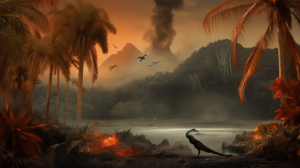
Pterosaurs were a diverse group of flying reptiles that lived during the Mesozoic Era. While pterodactyls and Pteranodon are two closely related species, other larger species like Quetzalcoatlus had wingspans up to 11 meters wide! These creatures ruled the skies with their impressive size and maneuverability, able to soar through the sky faster than any other known creature at the time.
Quetzalcoatlus was one of the largest known pterosaurs with an estimated wingspan between 10-11 meters long. This made them much bigger than their smaller cousins, such as Pteranodon, who only had a maximum wingspan of 5 meters wide. In addition to this impressive size, they also possessed features that enabled them to fly more efficiently, such as air sacs in their bones, which helped reduce weight while providing additional lift on longer flights. They also had specially adapted muscles that allowed for powerful takeoffs and quick turns midair when needed. Given the evidence from fossil records discovered worldwide that suggests these creatures did not remain stationary in one place for extended periods but instead moved about in search of new food sources or better habitats, it is believed that these adaptations may have been used for hunting or even migration over great distances.
Overall, the large pterosaurs such as Quetzalcoatlus were truly the rulers of the skies during their time. Their impressive size and adaptations enabled them to soar with great speed and agility. While Pteranodon may have been among the small pterosaurs, it could still fly great distances in search of food or better habitats due to its migratory habits. Both creatures remain fascinating today as scientists continue to study their anatomy and behavior to better understand these remarkable animals.
“Pterodactyls” weren’t technically dinosaurs but belonged to a larger group called “Pterosaurs,” which dominated the skies during the Mesozoic Era. They were the first vertebrates to evolve powered flight and were extremely successful during their time, with a diverse range of sizes and ecological niches. The largest pterosaurs had wingspans of over 30 feet and were likely apex predators, while smaller species might have been insectivores, fishers, or scavengers. The exact period during which pterosaurs lived is debated among scientists, but most existed during the Late Jurassic and Early Cretaceous Periods.
Pterodactyls were some of the most impressive creatures to inhabit our planet during the Late Jurassic Period. Not only did they possess features that enabled them to fly more efficiently, such as air sacs in their bones which helped reduce weight while providing additional lift on longer flights, but they also had specially adapted muscles that allowed for powerful takeoffs and quick turns midair when needed.
But what did these large flying reptiles eat?
Studies have shown that pterodactyls primarily feed on small animals and fish. This is evident from fossil records found around the world, indicating these creatures traveled vast distances looking for food sources or better habitats throughout their lifetime. It is believed their size largely influenced this diet; larger species like Quetzalcoatlus, which had wingspans reaching up to 11 meters wide, would have been able to hunt larger prey, whereas smaller species such as Pteranodon and Rhamphorhynchus who had wingspans ranging from 0.5 meters to 1 meter wide likely relied heavily on small animals or fishes as a source of sustenance.
At the end of the Mesozoic Era, many creatures that had once thrived were now extinct. One such group was the pterosaurs, a group of flying reptiles that included both small and large species. While some species, such as Quetzalcoatlus, had wingspans reaching up to 11 meters wide, others in this genus included smaller but still formidable creatures such as Pteranodon and Rhamphorhynchus, which had wingspans ranging from 0.5 meters to 1 meter wide, respectively.
The extinction of these creatures is believed to have been caused by several factors, including climate change, competition for resources with other animals, and human hunting. As temperatures dropped during the Late Jurassic Period due to changes in sea levels or volcanic activity, food sources may have become scarce, leading to starvation among certain pterosaurs unable to migrate or adapt quickly enough. Additionally, competition with other predators may have forced them out of their habitats, causing further decline in their population numbers over time until they eventually became completely extinct from our planet’s surface. Lastly, it is possible that humans hunted these animals for food resulting in an even greater reduction in their numbers before becoming ultimately wiped out.
Though pterodactyls went extinct millions of years ago, they still have a legacy in the form of modern birds. From wings used for flight and hollow bones to shared hunting strategies and similar anatomy, many similarities between these species suggest a common ancestor or shared evolutionary history.
Both groups possess wings used for flight and can be folded back against the body when unused. Additionally, both creatures have hollow bones that help reduce their weight, making flying through the air easier. In terms of behavior, pterosaurs were known to soar in circles over large bodies of water, while modern birds often do this as well – indicating their similar hunting strategies even after so many years apart from each other. Lastly, studies suggest that certain features found in modern bird skulls, such as an enlarged brain cavity, may also indicate a connection between these two species due to their similar anatomy and physiology despite being separated by millions of years of evolution.
Due to the lack of physical evidence, most people understand pterodactyls from paleo-artist artistic interpretations. These works allow us to gain insight into what these ancient creatures may have looked like and how they moved through their environment millions of years ago. Through detailed renderings of these animals, we can better understand how they lived and interacted with each other during the Late Jurassic Period before going extinct.
From paintings depicting them flying over watery landscapes or perched atop rocky cliffs to sculptures that bring their anatomy and features alive – there is no shortage of creative works inspired by pterosaurs that allow us to appreciate their beauty without ever having seen one ourselves in person. Additionally, some artworks even focus on recreating a realistic representation of what it might have been like if humans had coexisted with these creatures as depicted in certain cave drawings found around the world, such as those at Lascaux Caves in France or Chauvet Cave in southern France. By looking at such pieces, we can gain an even deeper appreciation for the lives and habitats that once belonged solely to pterodactyls before eventually fading away forever.
Fossil specimens are an invaluable source of information for scientists studying the past. They give us a window into history and allow us to understand how life may have looked millions of years ago. For this reason, many natural history museums around the world house vast collections of fossilized remains that visitors can explore and learn from.
These specimens range from tiny shells to large dinosaur bones, all carefully preserved to accurately represent their original state when they were first discovered. In some cases, these fossils are even displayed alongside artwork or recreations of what these creatures may have looked like during their time on Earth – giving visitors a more interactive experience while learning about ancient species. By examining these artifacts up close, we gain insight into the lives and habitats of creatures who lived long before us as well as the evolutionary pathways that led them to become extinct over time due to changing environmental conditions.
One reason we are still so captivated by these creatures is our innate curiosity about what life was like during that period. We can look at fossils and artwork for clues as to how they lived, but ultimately it’s up to our imagination as to who or what may have coexisted with them when they were around. This curiosity leads many amateur and professional scientists alike on a quest for answers that further fuels interest in this ancient species. Additionally, the fact that some artworks focus on recreating a realistic representation of what it might have been like if humans had coexisted with these creatures adds an extra layer of intrigue, making it easier for us to connect with them even though they are long gone.
Pterodactyls may have been extinct for millions of years but their legacy lives on in the form of fossil specimen, artwork, and even our imaginations. By studying the remains of their bones or admiring artwork inspired by these creatures, we can gain insight into their lives and habitats before going extinct. Ultimately, this helps us appreciate these ancient creatures’ beauty and better understand our place in the grand scheme of things. We can also look at their evolutionary pathways and how environmental conditions shaped them over time, helping us better understand our planet’s history. Overall, pterodactyls will continue to capture our imaginations for ages to come.
Pterodactyls and pteranodons are both extinct species of flying reptiles that lived during the Mesozoic Era. Both species had long wings, hollow bones for easier flight, and large brains relative to their body size. However, some key differences between them set them apart from one another. Pterodactyls, characterized by their smaller size and distinguishable toothless beaks, were likely more reliant on catching insects and small fish, while pteranodons, known for their massive wingspans, primarily hunted larger prey from the air. These differences in feeding strategies may have influenced their respective habitats and behaviours, allowing them to occupy niches similar to those of ichthyosaurs, which thrived in the ichthyosaur habitat in the Triassic. Overall, while both pterodactyls and pteranodons shared the skies of the Mesozoic, their adaptations and ecological roles showcased their unique evolutionary paths.
The most notable difference is in their skulls; while pterodactyls have short skulls with enlarged brain cavities and crests on the back of their heads, pteranodons have longer skulls without any crests or enlargements. Additionally, pteranodon wings were more curved than those of pterodactyls which enabled them to soar higher into the sky but also made it difficult for them to maneuver quickly.
Pterodactyls, often associated with dinosaurs in popular culture, were actually not dinosaurs. They belonged to a group of prehistoric reptiles known as pterosaurs, which were the first vertebrates known to have evolved powered flight. Pterosaurs lived during most of the Mesozoic Era, from the late Triassic to the end of the Cretaceous period (approximately 228 to 66 million years ago).
Dinosaurs and pterosaurs share a common ancestor, making them part of a larger group called Archosauria, which also includes crocodiles and birds. However, dinosaurs are specifically characterized by their unique hip structure and other skeletal features, which pterosaurs do not share. Dinosaurs primarily lived on land and had an upright stance, with their legs positioned directly under their bodies, unlike the sprawling posture of modern reptiles. Pterosaurs, on the other hand, were adapted to flying, with wings formed by a membrane of skin and muscle stretching from their elongated fourth finger to their bodies.
So, while pterodactyls are often thought of alongside dinosaurs, they were not dinosaurs but close relatives that took to the skies while dinosaurs roamed the Earth.
Pterodactyls were carnivorous creatures that primarily consumed small animals such as fish, insects, and lizards. They also had the advantage of being able to fly, which allowed them to hunt for food in various locations. Additionally, they had sharp claws and teeth, which helped them capture their prey more easily. Furthermore, they could consume larger animals such as birds and small mammals if needed due to their large size.
The size of pterodactyls varied greatly depending on the species, with some smaller ones having wingspans of only a few feet, while others had wingspans of up to 33 feet. The Quetzalcoatlus, the largest pterodactyl, had a wingspan twice the size of an average giraffe, making it one of the largest flying creatures ever.
The largest Pterosaur was Quetzalcoatlus, a flying reptile that lived during the Mesozoic Era. This creature had long wings with hollow bones for easier flight, and its skull featured an enlarged brain cavity and crests on the back of its head. Its wingspan could reach up to 33 feet in length, making it one of the largest known creatures to ever take to the skies. It weighed anywhere from 8-20 pounds due to its heavier skeletal structure compared to other flying reptiles at the time. All these adaptations made Quetzalcoatlus an impressive sight soaring through the sky!
Pterodactyls first appeared during the Late Triassic period around 228 million years ago and became extinct at the end of the Cretaceous period about 66 million years ago, along with the dinosaurs. The first pterodactyl fossils were discovered in Germany in the late 1700s and early 1800s, and subsequent discoveries have been made all over the world. These discoveries have provided scientists with insights into how these fascinating creatures lived and evolved over time.
Despite having lived millions of years ago, pterodactyls continue to capture the imagination of people today and remain a popular subject of study for paleontologists.